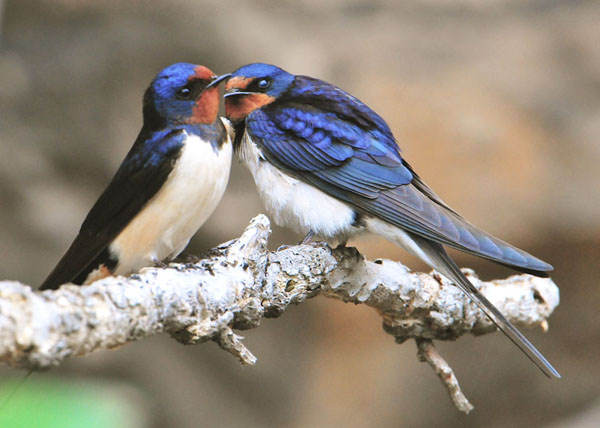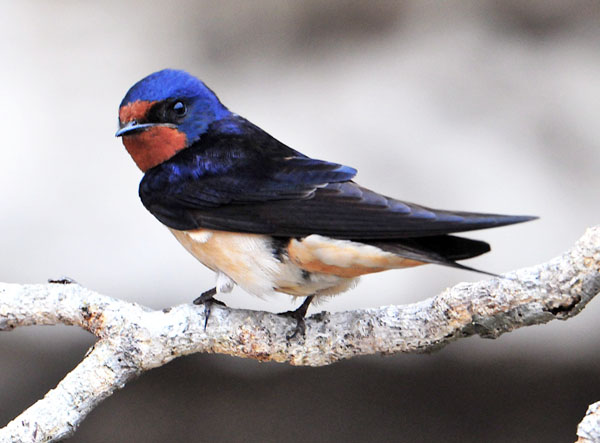
SWALLOW (Hirundo rustica)
(Home)

One of the most familiar of our summer visitors, the swallow (now usually referred to as the barn swallow) arrives back in Britain from southern Africa usually in April. It relies, not on satnav, but on its mysterious direction-finding ability to wend its way back to the place where it was born – birds will often return to the same nest-site year after year. The swallow is very much man-dependent; it builds its nest on ledges in barns, similar farm buildings or other man-made structures. Oddly, it seems to prefer to perch, not on trees, but on telephone cables.
Its near relative, the house martin (Delichon urbica), builds its mud nest high up close under the eaves. Both swallows and martins are generally double-brooded, sometimes there are three broods. The two species are often confused, but it is not difficult to distinguish them. Both birds have white chests, but only the martin has a very distinct white rump. The adult swallow’s reddish face is not easily seen at a distance, but its long tail ‘streamers’ are a giveaway. The two birds are quite different in flight. The swallow tends to swoop gracefully and low over pastures or water in its quest for insects, while the martin’s flight is higher and more fluttery.
The voices of both birds are a pleasant twitter. Towards the end of the summer swallows gather, often in considerable numbers, on wires, and they roost in reedbeds or such preparatory to their long flight back to Africa – you can pick out the young birds by their lack of streamers. Now here’s another amazing thing about these charming little birds: often the young of the third brood are left behind when their parents depart, and have to find their own way to the deep south. How do they do it?

Photos: John Sheppard. Text: George Metcalfe.
See Bird Archive for other birds in this series.